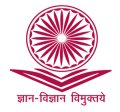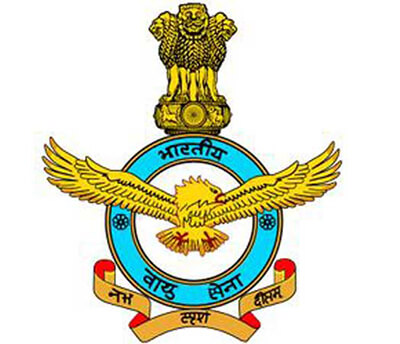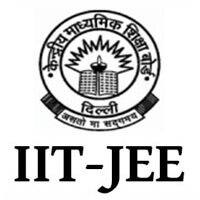India is a land blessed with an intricate network of rivers that crisscross its vast expanse, contributing significantly to its geographical and cultural tapestry. These rivers have played an essential role in shaping the history, culture, and socio-economic aspects of the nation. Among the numerous rivers that flow through India, several stand out for their sheer length and significance.
| River | Length (km) | States |
|---|
| Ganges | 2,525 | Uttarakhand, Uttar Pradesh, Bihar, West Bengal |
| Godavari | 1,465 | Maharashtra, Telangana, Andhra Pradesh |
| Yamuna | 1,376 | Uttarakhand, Uttar Pradesh, Haryana, Delhi |
| Brahmaputra | 2,900 | Tibet (China), Arunachal Pradesh, Assam |
| Krishna | 1,400 | Maharashtra, Karnataka, Andhra Pradesh |
| Narmada | 1,312 | Madhya Pradesh, Maharashtra, Gujarat |
| Tapti | 724 | Maharashtra, Madhya Pradesh, Gujarat |
| Mahanadi | 858 | Chhattisgarh, Odisha |
| Sabarmati | 371 | Rajasthan, Gujarat |
| Indus | 3,180 | Ladakh (India), Pakistan |
| Tungabhadra | 531 | Karnataka, Andhra Pradesh |
| Kaveri | 805 | Karnataka, Tamil Nadu |
| Luni | 495 | Rajasthan |
| Ghaggar-Hakra | Variable | Haryana, Punjab, Rajasthan |
| Betwa | 590 | Madhya Pradesh, Uttar Pradesh |
Ganges River (Ganga)
The Ganges, often regarded as the holiest river in Hinduism, originates from the Gangotri Glacier in the Himalayas of Uttarakhand. It flows through the states of Uttarakhand, Uttar Pradesh, Bihar, Jharkhand, and West Bengal before entering Bangladesh and emptying into the Bay of Bengal. The Ganges spans an impressive length of approximately 2,525 kilometers (1,569 miles). This river holds immense cultural significance for Hindus, and its banks host some of the most sacred cities, including Varanasi and Haridwar.
Length: 2,525 kilometers
States: Uttarakhand, Uttar Pradesh, Bihar, West Bengal
Significance: The Ganges, often referred to as the Ganga, holds immense cultural and religious significance in India. It is considered sacred by Hindus and is the lifeline for millions of people who depend on it for water, irrigation, and sustenance. The river has witnessed the rise and fall of civilizations and is associated with numerous myths and legends.
FAQs:
Q1: What is the source of the Ganges?
A: The Ganges originates from the Gangotri Glacier in the Himalayas.
Q2: What is the significance of the Ganges in Hinduism?
A: The Ganges is believed to cleanse one's sins and is an important destination for pilgrimages and ritual bathing.
Q3: Which city is located on the banks of the Ganges?
A: Varanasi (also known as Kashi) is one of the most prominent cities situated on the banks of the Ganges.
Yamuna River
The Yamuna, a tributary of the Ganges, originates from the Yamunotri Glacier in Uttarakhand. It flows through the states of Uttarakhand, Himachal Pradesh, Haryana, Delhi, and Uttar Pradesh. The river covers a distance of about 1,376 kilometers (855 miles) before merging with the Ganges at Allahabad (Prayagraj). The Yamuna has played a vital role in the history of the Indian subcontinent and is associated with various mythological stories.
Length: 1,376 kilometers
States: Uttarakhand, Delhi, Uttar Pradesh, Haryana
Significance: The Yamuna is a major tributary of the Ganges and flows through some of India's most populous cities. It provides water for irrigation, industry, and domestic use, but it also faces pollution challenges due to urbanization and industrialization.
FAQs:
Q1: Which historical monument stands on the banks of the Yamuna in Agra?
A: The Taj Mahal, one of the Seven Wonders of the World, is located on the banks of the Yamuna.
Q2: How does the Yamuna's pollution impact the environment?
A: The discharge of untreated sewage and industrial effluents into the Yamuna has led to severe pollution, affecting aquatic life and ecosystems.
Q3: What is the "Yamuna Action Plan," and why was it implemented?
A: The Yamuna Action Plan is a series of initiatives aimed at reducing pollution in the Yamuna and restoring its water quality.
Brahmaputra River
Originating in Tibet, the Brahmaputra flows through the northeastern Indian states of Arunachal Pradesh and Assam. It also traverses through the international borders of Bhutan and Bangladesh before eventually emptying into the Bay of Bengal. The Brahmaputra's length within India is approximately 916 kilometers (569 miles), while its total length, including its Tibetan and Bangladeshi stretches, is much longer. The river is a lifeline for the people of Assam and has played a crucial role in their lives, shaping their culture and economy.
Length: 2,900 kilometers
States: Tibet (China), Assam, Arunachal Pradesh
Significance: The Brahmaputra is one of the major rivers in the world and is known for its turbulent course through the Himalayas and its vast delta in Bangladesh. It is a lifeline for Assam and provides water for irrigation and transportation.
FAQs:
Q1: Which glacier feeds the Brahmaputra River?
A: The Brahmaputra is fed by the glaciers of the Tibetan plateau, primarily the Angsi Glacier.
Q2: How does the Brahmaputra impact the geography of Assam?
A: The Brahmaputra's frequent flooding deposits fertile soil on its banks, making the region agriculturally productive.
Q3: What is the significance of the Brahmaputra's delta in Bangladesh?
A: The Brahmaputra Delta is known for its rich biodiversity and supports various ecosystems, including mangroves.
Godavari River
The Godavari, India's second-longest river, originates from the Trimbak Hills in Maharashtra. It flows through the states of Maharashtra, Telangana, Chhattisgarh, and Andhra Pradesh before finally emptying into the Bay of Bengal. The river's length is approximately 1,465 kilometers (910 miles). The Godavari holds immense cultural importance, and its basin is known as the "Rice Granary of India" due to its fertile lands.
Length: 1,465 kilometers
States: Maharashtra, Telangana, Andhra Pradesh, Chhattisgarh, Odisha
Significance: The Godavari is the second-longest river in India and is often referred to as the "Dakshin Ganga" (South Ganga). It plays a crucial role in the irrigation of agricultural lands in its basin. The Godavari Delta is known for its fertile soils and is a major rice-producing region.
FAQs:
Q1: What is the significance of the Godavari River for farmers?
A: The Godavari River's water is used for irrigation, making it a lifeline for agriculture in its basin.
Q2: Which historic city is situated on the banks of the Godavari?
A: Nashik, one of the four Kumbh Mela hosting cities, is located on the banks of the Godavari.
Q3: What is the Papi Kondalu range, and how is it related to the Godavari?
A: The Papi Kondalu range is a scenic hill range through which the Godavari flows, creating breathtaking landscapes.
Krishna River
Originating from the Western Ghats in Maharashtra, the Krishna River flows through Maharashtra, Karnataka, and Andhra Pradesh. Its total length is about 1,400 kilometers (870 miles). The Krishna River has been instrumental in shaping the historical and cultural landscape of the Deccan region.
Length: 1,400 kilometers
States: Maharashtra, Karnataka, Andhra Pradesh, Telangana
Significance: The Krishna River is an important source of irrigation water, and its basin is agriculturally productive. The river also has a significant role in the generation of hydroelectric power.
FAQs:
Q1: Which major dam is built across the Krishna River?
A: The Srisailam Dam, situated in Andhra Pradesh and Telangana, is one of the largest dams built across the Krishna.
Q2: How does the Krishna River impact the local economy?
A: The river supports agriculture, industries, and power generation, contributing significantly to the local economy.
Q3: What is the origin of the Krishna River?
A: The Krishna originates in the Western Ghats near Mahabaleshwar in Maharashtra.
Narmada River
The Narmada River, originating from the Amarkantak Plateau in Madhya Pradesh, flows through Madhya Pradesh, Maharashtra, and Gujarat before emptying into the Arabian Sea. The Narmada's length is around 1,312 kilometers (815 miles). It holds significant cultural and religious importance and is often referred to as the "Life Line of Gujarat."
Length: 1,312 kilometers
States: Madhya Pradesh, Maharashtra, Gujarat
Significance: The Narmada River is revered as a sacred river and has significant economic value. The Narmada Valley Project has led to the development of irrigation and hydroelectric power in the region.
FAQs:
Q1: What is the "Narmada Bachao Andolan"?
A: The Narmada Bachao Andolan is a social movement aimed at raising awareness about the environmental and social impacts of large dams on the Narmada River.
Q2: Which famous waterfall is associated with the Narmada River?
A: The Dhuandhar Waterfall in Jabalpur, Madhya Pradesh, is a famous waterfall on the Narmada.
Q3: How has the Sardar Sarovar Dam impacted the Narmada River's flow?
A: The Sardar Sarovar Dam has led to controversies over its impact on downstream ecosystems and local communities.
Indus River
Though primarily associated with Pakistan, the Indus River also flows through the Ladakh region of India. Originating in Tibet, it enters India through Ladakh and flows through the region before continuing into Pakistan. The Indus has a total length of approximately 3,180 kilometers (1,976 miles), with its Indian portion being relatively smaller. The river has historical significance and was central to the Indus Valley Civilization, one of the world's earliest urban cultures.
Length: 3,180 kilometers
States: Tibet (China), Jammu and Kashmir
Significance: The Indus River is one of the longest in Asia and is vital for the region's irrigation, agriculture, and economy. It is historically significant, as it gave rise to the Indus Valley Civilization.
FAQs:
Q1: Which ancient civilization flourished along the banks of the Indus River?
A: The Indus Valley Civilization, one of the world's oldest urban civilizations, developed along the Indus River.
Q2: What is the importance of the Indus Waters Treaty?
A: The Indus Waters Treaty, signed between India and Pakistan in 1960, governs the sharing of the Indus River's waters between the two countries.
Q3: What are the challenges faced by the Indus River's ecosystem?
A: The Indus River faces challenges such as pollution, over-extraction of water, and the impact of climate change.
Mahanadi River
The Mahanadi River begins its journey in Chhattisgarh and flows through Odisha before emptying into the Bay of Bengal. Its length is about 858 kilometers (533 miles). The Mahanadi basin has supported ancient and medieval civilizations and continues to be essential for the region's agricultural and economic activities.
Length: 858 kilometers
States: Chhattisgarh, Odisha
Significance: The Mahanadi River is an important source of water for irrigation and industry in Chhattisgarh and Odisha. It supports agriculture and is essential for the livelihoods of many communities.
FAQs:
Q1: What is the Hirakud Dam, and which river does it control?
A: The Hirakud Dam is built across the Mahanadi River in Odisha and is one of the longest major earthen dams in the world.
Q2: How does the Mahanadi River impact the coastal areas of Odisha?
A: The Mahanadi Delta supports agriculture, fisheries, and provides a crucial buffer against cyclones.
Q3: What are the challenges faced by the Mahanadi River's ecosystem?
A: Pollution, sedimentation, and water management issues are some challenges impacting the Mahanadi's ecosystem.
Tapti River
Originating in the Satpura Range of Madhya Pradesh, the Tapti River flows through Maharashtra and Gujarat before entering the Arabian Sea. The river's length is approximately 724 kilometers (450 miles). The Tapti has been a lifeline for the region, providing water for irrigation and other purposes.
Length: 724 kilometers
States: Madhya Pradesh, Maharashtra, Gujarat
Significance: The Tapi River, also known as the Tapti, flows through central India and contributes to the region's irrigation and agriculture. It is associated with historical and cultural significance.
FAQs:
Q1: What is the origin of the Tapi River?
A: The Tapi River originates in the Satpura Range in Madhya Pradesh.
Q2: Which city in Gujarat is located near the estuary of the Tapi River?
A: Surat, one of Gujarat's major cities, is situated near the Tapi River's estuary.
Q3: How has industrialization impacted the Tapi River's water quality?
A: Industrial pollution has affected the Tapi River's water quality, posing challenges for both the environment and human health.
Son River
The Son River, originating in the Amarkantak Plateau of Madhya Pradesh, flows through Madhya Pradesh, Jharkhand, Bihar, and Uttar Pradesh before merging with the Ganges. Its length is about 784 kilometers (487 miles). The Son River has historical and cultural significance, with numerous myths and legends associated with it.



















